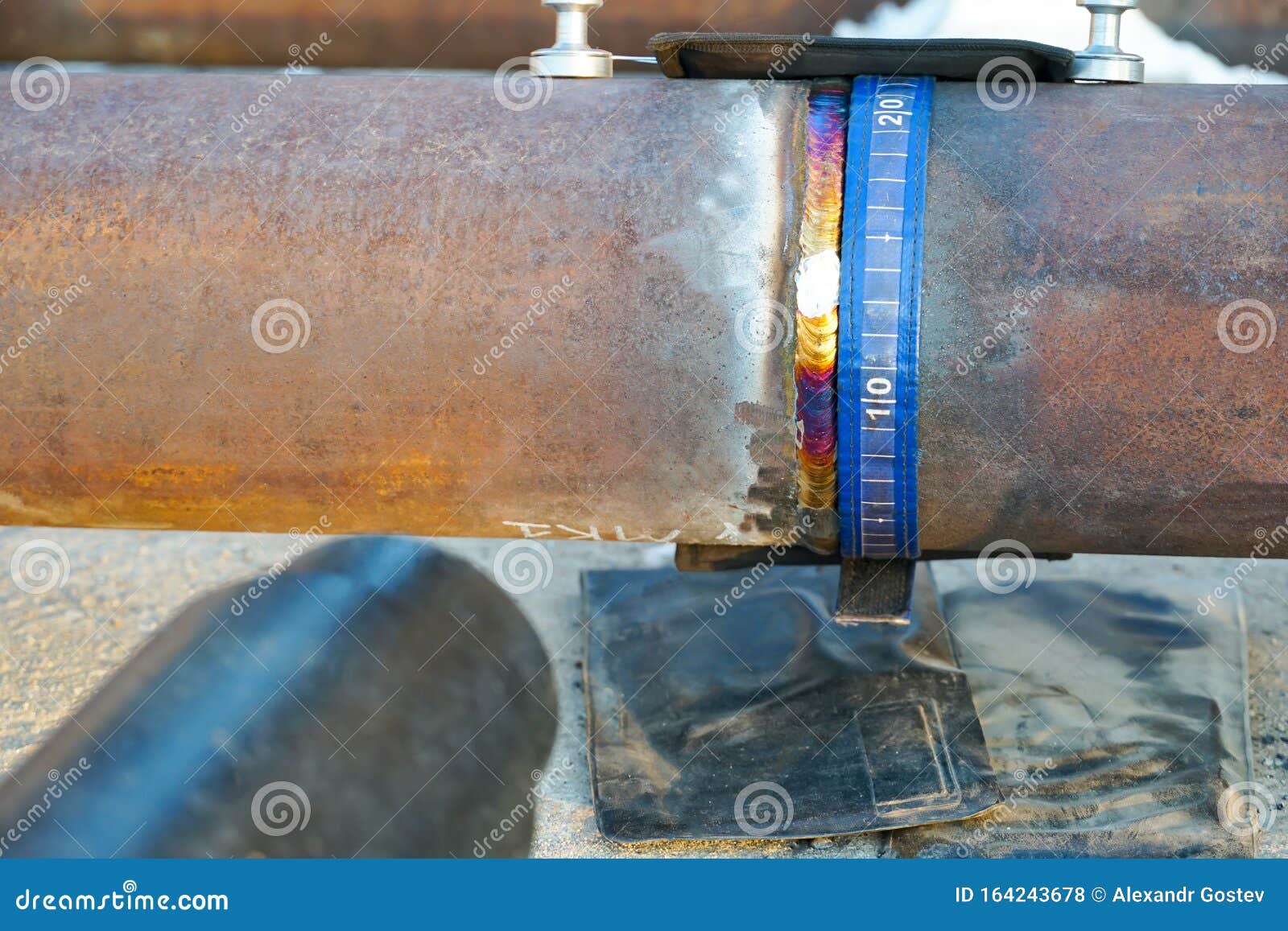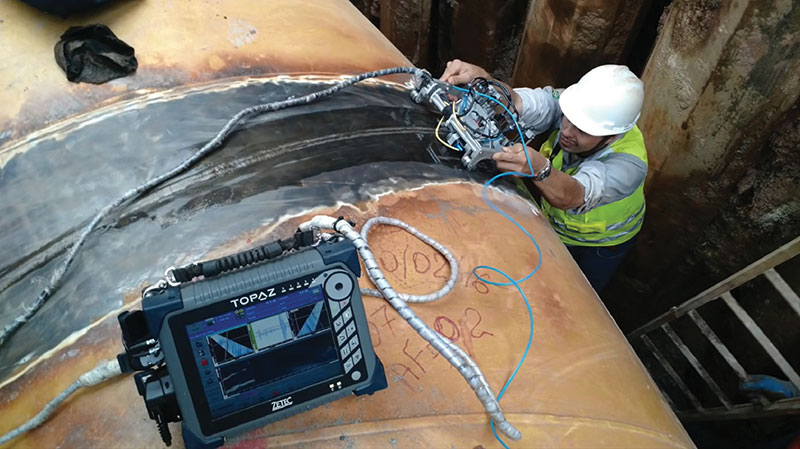Safety And Security First: Comprehensive Pipeline Welding Inspection for every single Task Phase
Safety And Security First: Comprehensive Pipeline Welding Inspection for every single Task Phase
Blog Article
Maximizing Performance: Pipeline Welding Evaluation Ideal Practices
By carrying out finest techniques for pipeline welding inspection, companies can improve processes, minimize errors, and improve job timelines. The thorough attention to detail needed in welding examination holds the essential to the long-term longevity and integrity of the pipelines, making it a subject of utmost importance in the market.

Relevance of Effective Welding Inspections
Reliable welding inspections play a vital role in guaranteeing the structural honesty and safety and security of pipes. Correct inspections are necessary to recognize any type of problems, discontinuities, or blemishes in the bonded joints that might endanger the overall integrity of the pipe system. By carrying out thorough evaluations, examiners can detect concerns at an early stage, protecting against possible leakages, tears, or failings that might have significant environmental and safety consequences.
Prompt and exact welding assessments likewise assist in preserving conformity with market requirements and regulations. Abiding by these criteria is not just a lawful requirement however additionally a required action to guarantee the integrity and longevity of the pipelines. In addition, efficient evaluations can add to set you back financial savings by minimizing the need for costly fixings or substitutes as a result of welding flaws that might have been prevented or corrected throughout the evaluation process.
Utilizing Technology for Assessments
To improve the efficacy and precision of pipe welding assessments, the combination of innovative innovations has actually ended up being significantly imperative in making certain exact and comprehensive analyses of welded joints. Using technology for assessments offers many advantages, consisting of raised effectiveness, enhanced precision, and boosted precaution. Among the vital technological advancements in pipeline welding examinations is making use of automated ultrasonic testing (AUT) systems. These systems can check welds promptly and properly, providing in-depth information on possible defects or issues within the weld joint. Furthermore, remote visual examination (RVI) devices such as robot spiders equipped with video cameras enable examiners to gain access to and review difficult-to-reach locations without the demand for extensive disassembly or manual intervention. Moreover, the application of electronic systems for information evaluation and reporting enhances the assessment procedure, making it possible for real-time data interpretation and seamless documentation. By embracing these technical remedies, pipe welding inspections can be conducted better, bring about greater high quality welds, enhanced overall safety, and minimized job timelines.
Establishing Clear Evaluation Protocols
Establishing clear examination protocols is crucial for guaranteeing uniformity and reliability in the pipe welding inspection process. These protocols function as a set of standards that describe the details actions, requirements, and approaches to be complied with throughout inspections. By clearly defining the examination protocols, all examiners associated with the procedure can understand their duties and roles, resulting in a much more standard and reliable inspection workflow.

Regular review and updates to the evaluation procedures are additionally crucial to adapt to changing industry standards and requirements. By continually refining and improving the methods based upon responses and lessons found out, pipe welding examinations can promote the best quality requirements and regulative compliance.
Training and Accreditations for Examiners
Training and qualifications for examiners are critical in guaranteeing the competence and effectiveness of people charged with overseeing pipe welding processes - Pipeline Welding Inspection. Appropriately trained assessors have the necessary understanding and abilities to efficiently assess weld high quality, adherence to welding treatments, and compliance with market standards and laws
Qualifications, such as those provided by the American Welding Culture (AWS) or Full Report the American Oil Institute (API), validate an assessor's proficiency and capacity to carry out inspections to the highest possible requirements. These certifications usually need rigorous training, assessments, and ongoing specialist development to make sure that inspectors remain current with the most up to date developments in welding technology and assessment strategies.
In addition to official certifications, constant training programs play an essential function in boosting examiners' capacities. These programs cover a variety of topics, including welding procedures, issue detection, security methods, and relevant codes and standards (Pipeline Welding Inspection). By buying thorough training and certifications for examiners, business can promote the honesty of their pipeline welding jobs and minimize the threats connected with low quality welds
Continual Renovation in Evaluation Processes
Building upon the foundation of experienced and qualified examiners, constant renovation in examination procedures is crucial for guaranteeing the ongoing quality and compliance of pipeline welding operations. By executing a system of constant enhancement, pipeline welding evaluation processes can evolve to meet the changing needs of the market, technical improvements, and governing demands. This includes on a regular basis assessing and examining inspection methods, tools, and treatments to click for info recognize areas for improvement.
One trick element of continuous improvement in examination procedures is feedback. Collecting input from examiners, welders, engineers, and other stakeholders enables a thorough evaluation of current practices and the recognition of prospective locations for enhancement. Additionally, leveraging analytics and data can provide beneficial understandings into the performance of examination procedures, allowing notified decision-making for optimization.
Furthermore, investing in training and development programs for assessors can make sure that they are equipped with the current knowledge and abilities to perform their duties effectively. Continuous enhancement is a vibrant process that needs devotion and dedication go to the website from all stakeholders to drive excellence in pipeline welding inspection practices.
Verdict
Finally, optimizing effectiveness in pipeline welding inspections is crucial for making certain the top quality and security of facilities projects. By making use of innovation, establishing clear methods, giving proper training and accreditations for inspectors, and constantly improving evaluation procedures, organizations can streamline their procedures and reduce risks. It is critical for sectors to focus on reliable welding assessments to keep high requirements and fulfill regulatory demands.
Efficient assessments can add to set you back savings by minimizing the requirement for costly repair services or replacements due to welding flaws that could have been stopped or dealt with during the examination process.
Establishing clear examination procedures is crucial for guaranteeing uniformity and reliability in the pipeline welding assessment procedure. By clearly defining the assessment methods, all inspectors included in the procedure can recognize their functions and duties, leading to a much more standard and efficient assessment operations.
Clear inspection protocols assist in minimizing the chance of errors or oversights during the assessment procedure.Structure upon the structure of licensed and qualified examiners, constant enhancement in examination procedures is essential for guaranteeing the ongoing high quality and compliance of pipeline welding operations.
Report this page